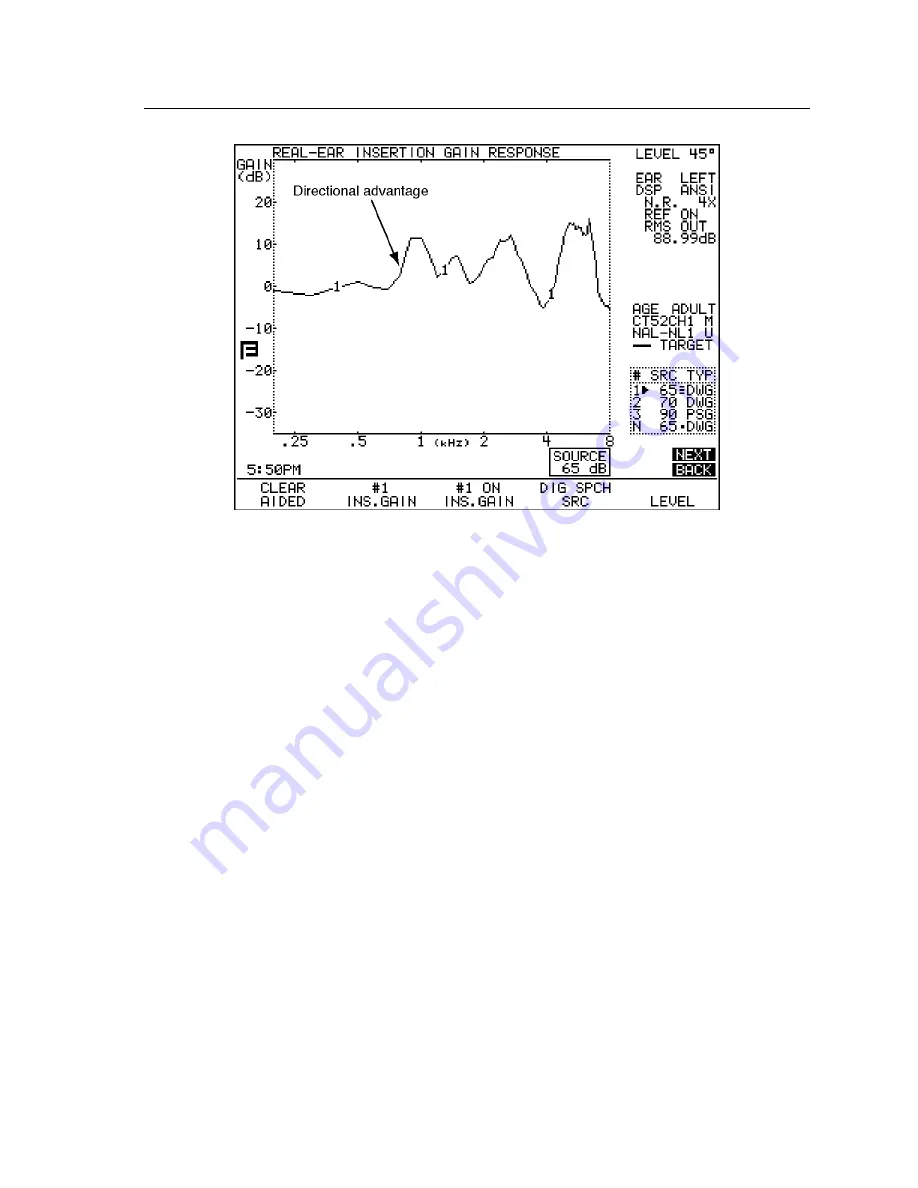
4: Real-Ear Measurements
39
Figure 4.4.4C—Amount of amplification advantage provided by the directional microphones
4.5 Testing in the SPL Screen
The SPL screen permits the user to view all the major components of a client’s
hearing loss and hearing aid fitting on one screen in dB SPL. The hearing thresholds
and uncomfortable loudness levels, which are generally measured in HL, are
converted to SPL. The insertion gain target is also converted to SPL. You can
measure and display the unaided response and three aided responses, in SPL, at
three different source amplitude levels. Having all this information in a common
format provides a convenient way to view the hearing loss and the amplification
provided by the hearing aid without the confusion of different frames of reference.
The factory default amplitudes used in this program are generally 50, 65 and 90 dB.
(When DSL is the selected fitting rule, these default levels will vary.) The user may
choose other amplitude levels while conducting the tests. The idea is to make sure
that:
• Soft sounds are audible (AIDED 1).
• Moderate sounds are comfortable (AIDED 2).
• Loud sounds do not exceed the user’s uncomfortable loudness level (AIDED 3).
This technique is especially appropriate for non-linear hearing aids.












































